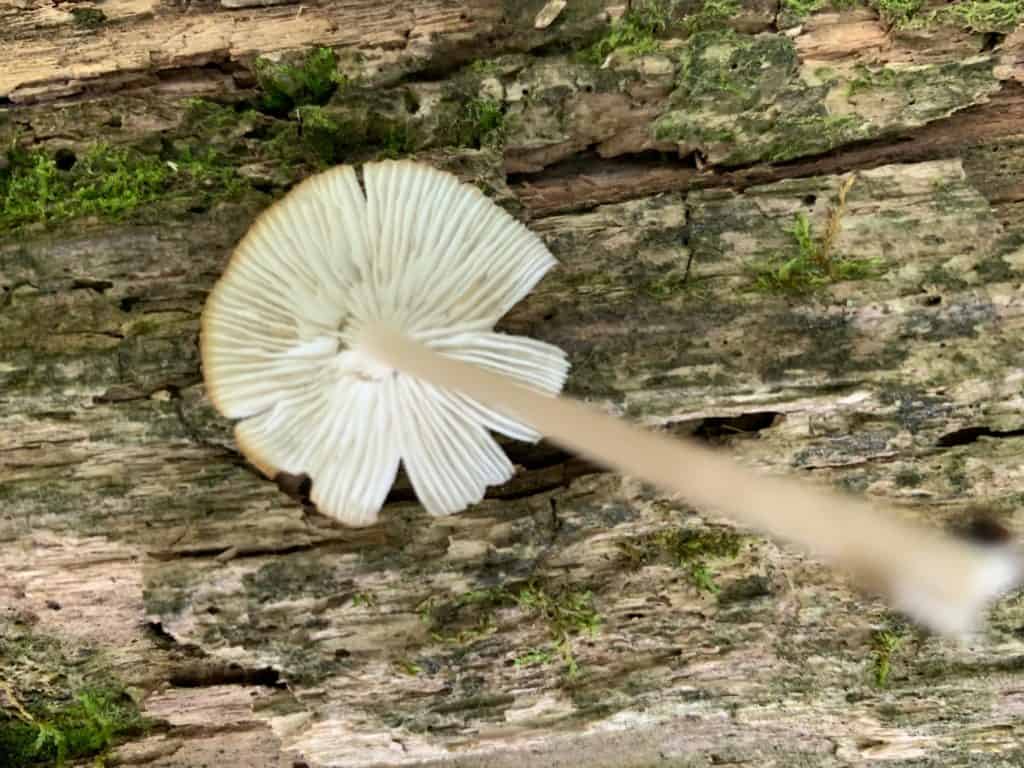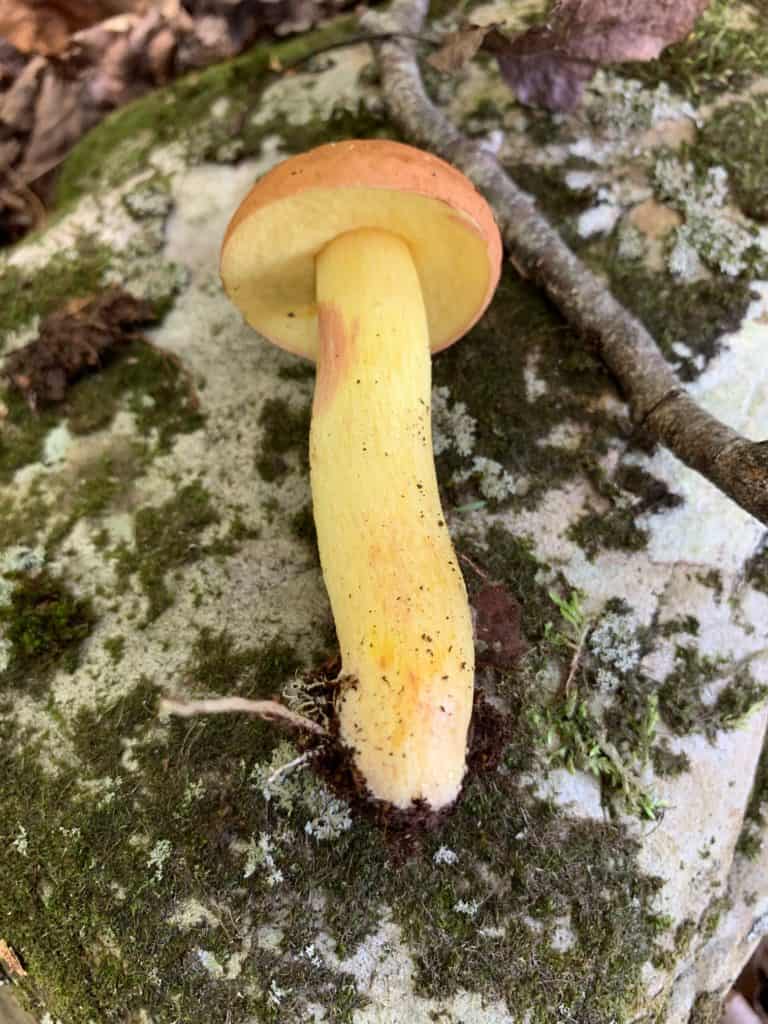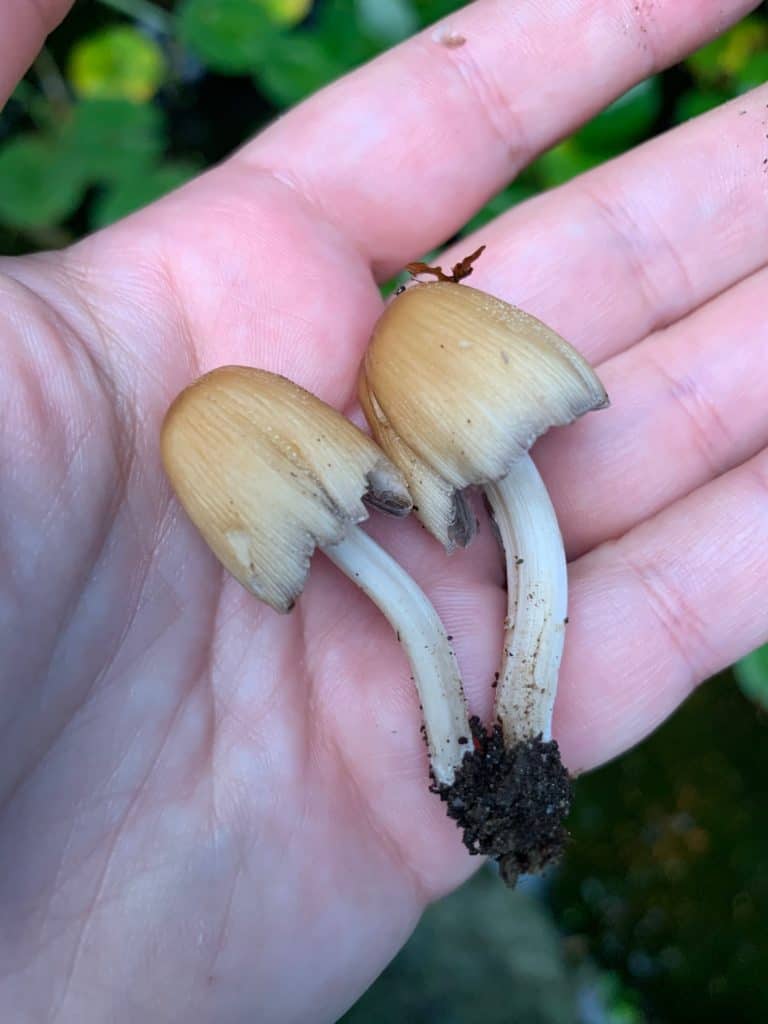
Mushroom hunting in Vermont provides hours of entertainment and health benefits, too
By Brooke Geery
A vast network of underground mycelium lies hidden in the forests of Vermont. This is, until the right combo of water and heat cause it to spring forth as wild mushrooms in a variety of shapes and sizes. Some are edible, some are poisonous, some are just plain cool to see. With a little research and training, you can learn not only to spot them, but identify which are delicious and vitamin rich. This article is by no means a comprehensive guide, but I have spent this summer diligently seeking out mushrooms around Rutland, and now, as it is prime mushroom season, I hope to share what I have learned. It is important to note before I get too far, never eat anything unless you are completely sure what is it!
September is officially national mushroom month, but for me, the hunt began in June, when I came across an odd-shaped shiny red fungi on a log pile. I posted a picture on Instagram, where it was seen by Roger Boutard, a.k.a. the “Killington Bird Man” and he easily identified it as a reishi mushroom, heralded for its health and healing properties. Since then, Boutard, an expert forager, has kindly served as my main resource, giving tips based on photos I send, as well as providing insider knowledge on what grows where.

When foraging, it’s good to know what you’re looking for. You can go into the forest and pick things willy nilly hoping to identify them later, but you will have much more success looking for specific varieties — chantrelles, morels, porchini, oysters, chicken- and hen-of-the-woods are all common in Vermont. It’s also good to know the poisonous mushrooms so you can steer clear. The most deadly mushroom in the forest is called the Amanita death angel. It first appears as a white egg-shaped object covered with veil, which could be mistaken for the edible horse or white puffball mushrooms. As it ages (over the course of days, not weeks) ragged patches of the veil can remain, the cap will flatten out, and gills will appear.


It is good practice to avoid any mushroom with white gills. However, not all white mushrooms are bad. Oyster mushrooms, for example, are delicious.
“Remember when identifying oysters the most important thing is they are growing from the wood,” Boutard said. “ Never eat white mushrooms that looks like its growing from the ground. Oyster mushrooms grow mostly on Vermont sugar maples.”

Chantrelles are another common and highly sought after variety. They grow best in south-facing, middle-aged oak forests.
“Look for ravines that run down the mountain—chantrelles will grow on the sides of those ravines,” Boutard said. “When you pick them use a little pair of scissors so that you do not disturb the mycelium. That way they will come up in the same place next year.”
The golden chantrelle, black trumpet and others are super tender and flavorful, but beware of look-a-likes. One of the most common is the jack-o-lantern mushroom, which is responsible for many poisonings. When you cut open a chantrelle it will be white inside and smell like apricots. Jack-o-lanterns are orange inside, and also bioluminescent, so if you’re still not sure, bring them into the dark, and they will glow.
Another common variety this time of year is the bolete. There are literally hundreds of kinds of boletes, the most popular/delicious being the porchini. Boletes have wide stems and the underside of the caps are spongy. Some stain blue when touched, while others do not. The biggest trick to these though, is finding them when they are young. Insects and slugs are also fans, and it’s difficult to find them not already half-eaten! However, if you do come across one, keep looking.

“You better go back in the woods and get some more of those,” Boutard said when I sent him a picture of a young two-color bolete I found. “They’re like rats, where there’s one, there’s 100.”
While I didn’t find any more two-colors, I did find a motherload of Ash Boletes. As the name suggests, it grows around Ash trees, and from the top, it’s irregular-shaped cap kind of looks like a turd. However, the underside is bright yellow. I carried home a bunch, and Boutard suggested making soup confirming them as a vitamin-rich specimen, but honestly, I was too scared to eat them. Instead, I am holding out for the Boletus Edulis a.k.a. porchini mushroom.
“When it rains go to a big cemetery where there are Norway Spruces,” Boutard said. “Sometimes college campuses have them. For taste, there is nothing like porchini. Take a little slice, it will be sweet, not bitter.”
Another variety to be on the look out for this time of year is hen-of-the-woods, which will start to appear after the first frost.
“My favorite mushroom is hen-of-the-woods,” Boutard said. “It doesn’t taste that great, but it is good for your immune systems. Prevents cancer. I put it in the crockpot with broth and have it every day in the fall when the hen are available. They need a light frost and then a heavy rain, then go look under 200-year-old oak trees.”
Boutard’s advice to look for specific trees has really paid off for me. I have had decent luck finding quality mushrooms, but my biggest score so far happened on Labor Day.

On a Home Depot run, I was scanning the sides of the road for large oak trees, and I saw a huge yellow ball at the bottom of a half-dead tree on Town Line Road. I literally slammed on my brakes and turned around. On closer inspection, it was a huge mushroom resembling a brain with orange on the tips. I pried half of it away from the tree root and took it home for identification. With Boutard’s help I was able to determine I’d found a perfect, young chicken-of-the-woods, right in plain sight. I fried it up and fully enjoyed my first big score. Unfortunately, when I headed back the next morning to collect the rest, another mushroom hunter had unsurprisingly beaten me to it. So, until the next rain storm, I will wait.
If you’re interested in mushroom hunting, Boutard recommends starting with a copy of “The Audubon Society Field Guide to North American Mushrooms” by Gary Lincoff and if you can, find local experts to head out into the woods with. Whatever you do, never eat any wild mushroom unless you are 100% sure of its identity. Mushrooms are rich in vitamins, D specifically, and eating the right kinds can actually have effects such as lowering cholesterol or preventing cancer, but eating the wrong one can have dire consequences.
Happy hunting!












